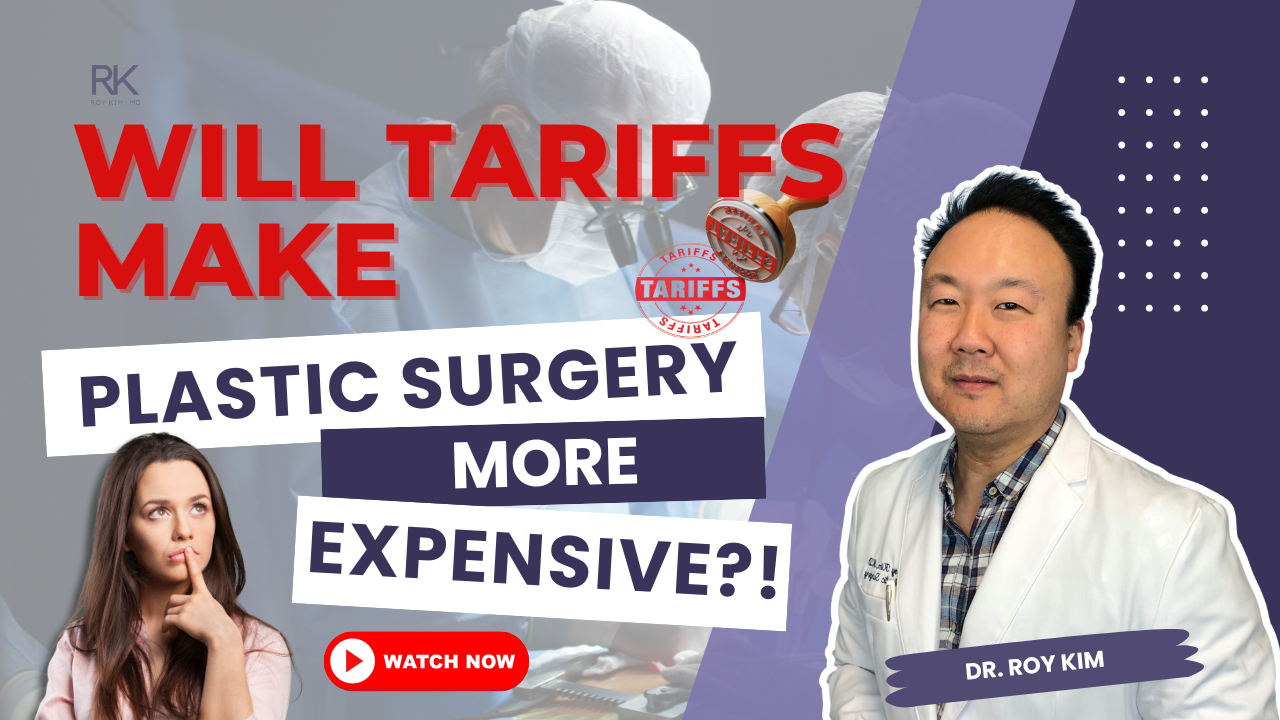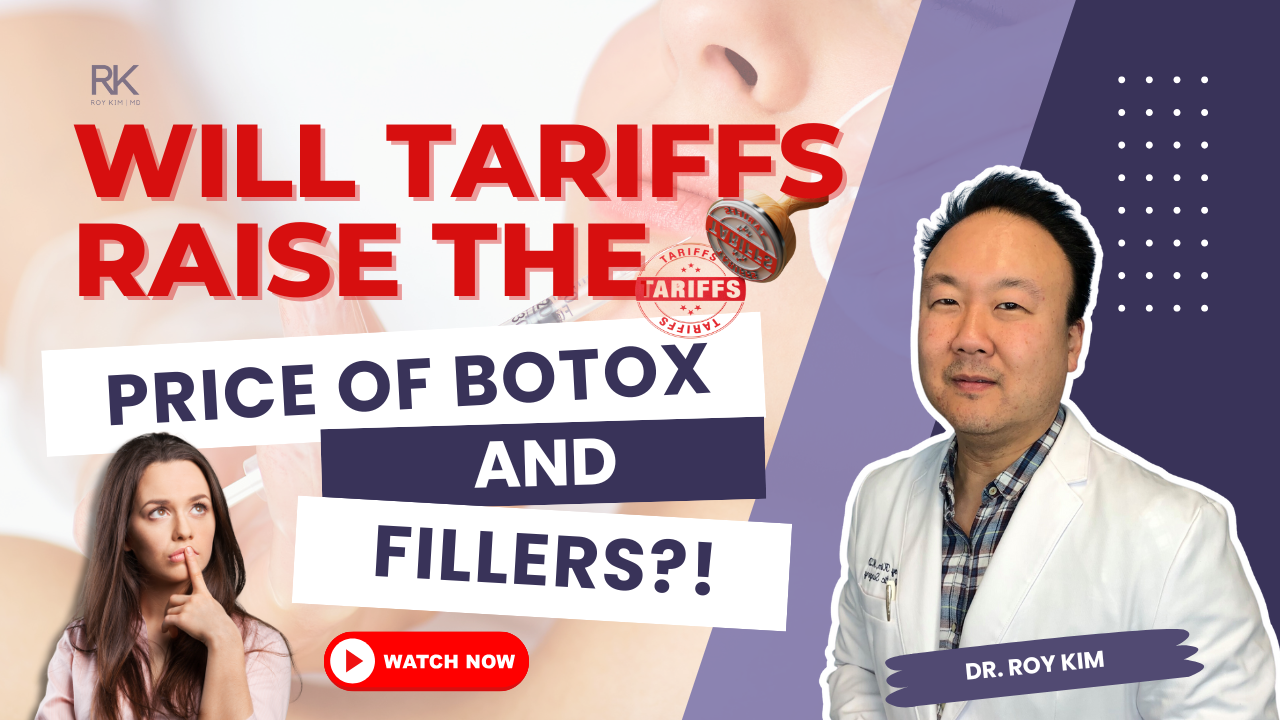Tariffs on Plastic Surgery, Breast Implants, and Injectables

3:11

1:30

2:52
As international trade tensions continue to shift, the ripple effects are being felt in unexpected places—including the aesthetic medicine industry. For those who regularly seek beauty enhancements like Botox, breast implants, and dermal fillers, recent changes in U.S. tariff policy might raise an important question: Will these procedures become more expensive?
Understanding tariffs and their impact on imported medical products is crucial for anyone considering cosmetic treatments. In this article, we’ll explore how tariffs could affect the cost of your favorite procedures, which products are at risk, and what you can do to stay ahead of potential changes.
Understanding Tariffs and Their Role in Aesthetic Medicine
Tariffs are government-imposed duties on imported goods, designed to protect domestic industries or influence trade policy. While they typically target commodities like steel, cars, or tech, medical-grade products—including those used in cosmetic and reconstructive procedures—are increasingly on the radar.
For aesthetic medicine, the origin of a product plays a big role. If it’s manufactured in the U.S., it’s generally exempt. However, many popular products come from countries like Ireland, South Korea, and Germany—nations subject to U.S. trade negotiations and fluctuating tariff schedules.
Breast Implants and Tariffs
Breast augmentation is among the most popular cosmetic surgeries in the U.S. But could that change if implants become pricier due to tariffs?
Where Are Breast Implants Made?
- Mentor (USA – Dallas, TX): Safe from tariffs
- Sientra (USA – Franklin, WI): Safe from tariffs
- Allergan (Costa Rica): Possible tariff risk
- Motiva (Costa Rica): Possible tariff risk.
Medical vs. Aesthetic Use
Interestingly, the implants used for cosmetic breast enhancement are the exact same as those used for reconstructive surgery post-mastectomy. This overlap might provide a safety net—products with approved medical uses often receive exemptions or reduced tariff rates.
Key Insight: Unless targeted specifically, breast implants used in reconstructive surgery may continue to be imported with minimal tariffs, keeping costs manageable even for aesthetic uses.
Patient Impact
If tariffs are enforced on Costa Rican implants, prices could increase. However, due to the dual-use nature of these devices, many experts predict minimal overall impact.
Botox, Fillers, and Injectables Under Tariff Scrutiny
Injectables are a staple in modern beauty regimens. Here’s how tariffs may affect your go-to wrinkle fighters and volume boosters.
Injectable Neurotoxins and Their Origins
- Botox – Made in Ireland → Tariff Rsk
- Daxxify – Made in the USA → Safe
- Dysport & Xeomin – Made in Europe → Tariff Risk
- Jeuveau & Letybo – Made in South Korea → Tariff Risk
Medical Use Exemptions
Botox and other neurotoxins are often prescribed for medical reasons like migraines or muscle disorders. Because of this, they may be classified as essential medications, exempt from tariffs.
HA Fillers & Others
- Radiesse (Calcium Hydroxyapatite) – Made in Wisconsin → Safe
- Sculptra (PLLA) – Made in Europe → Tariff Risk
- Most HA Fillers – Europe → Tariff Risk
- Revance HA Filler – Made in Canada → Likely lower tariffs due to USMCA agreement
Stat Snapshot: Approximately 80% of injectables used in the U.S. are imported.
Medical Use Exemptions
Because Sculptra has a health insurance indication for lipoatrophy/ lipodystrophy, there is a probable lower risk of tariff with this product. Other filler products will have some tariff risk.
Surgical Supplies and Anesthesia: Hidden Costs
Your procedure involves more than just implants and injectables. Here’s how tariffs may affect the tools and medicines your provider relies on:
Surgical Supplies
Items like syringes, drapes, gauze, and gloves are mostly single-use and largely imported—especially from China, Southeast Asia, and Mexico. In August 2024, the U.S. raised tariffs on syringes to 50%.
Anesthesia Drugs
Most anesthesia medications are imported from China and India. While pharmaceuticals were recently exempted from Trump’s April 2025 executive order, this policy could change under future administrations.
Potential Price Impact
While these items are used in all forms of surgery (not just cosmetic), even a modest 5–10% increase in supply costs could be passed on to patients. The impact might be more noticeable in boutique, private-pay settings like med spas and cosmetic clinics.
Navigating the New Landscape: What Patients Can Do
Stay Informed
Ask your provider where their implants, injectables, or fillers are sourced. Many high-end practices already opt for U.S.-made products to reduce exposure to geopolitical risks.
Consult on Timing
If you’re planning a procedure in the next 6–12 months, it might be worth discussing whether pricing could change due to supply constraints or import policies.
Explore Alternatives
Switching to domestic brands like Daxxify or Radiesse might help maintain your treatment plan without tariff-induced cost hikes.
Expert Opinions and Industry Response
Industry experts suggest that while tariffs may cause slight increases in product costs, they likely won’t deter consumers driven by personal aesthetics and well-being.
Manufacturers’ Response:
- Some are exploring new production facilities in North America.
- Others are advocating for medical exemptions under current trade laws.
Clinics’ Adaptations:
- Stockpiling popular products pre-tariff.
- Bundling services to maintain pricing stability.
Conclusion
The intersection of global economics and aesthetic medicine might sound unlikely, but it’s becoming increasingly relevant. As tariffs evolve, so too may the pricing of your favorite treatments. Fortunately, many products are either made domestically or qualify for exemptions due to medical necessity.
Concerned about potential price changes in your upcoming procedure?
Book a consultation today to explore tariff-safe options tailored to your beauty goals.
FAQs
1. Will tariffs affect all cosmetic procedures?
2. Are U.S.-made implants and injectables exempt from price increases?
3. Can I still access my preferred brand of filler or neurotoxin?
4. Should I schedule procedures before tariffs take effect?
5. How can I verify the origin of the products used in my treatment?
6. Will insurance cover increased costs due to tariffs?
7. Are tariffs permanent?
Don’t miss out on the future of aesthetic procedures.
Sign up for our newsletter to stay updated on the latest innovations!